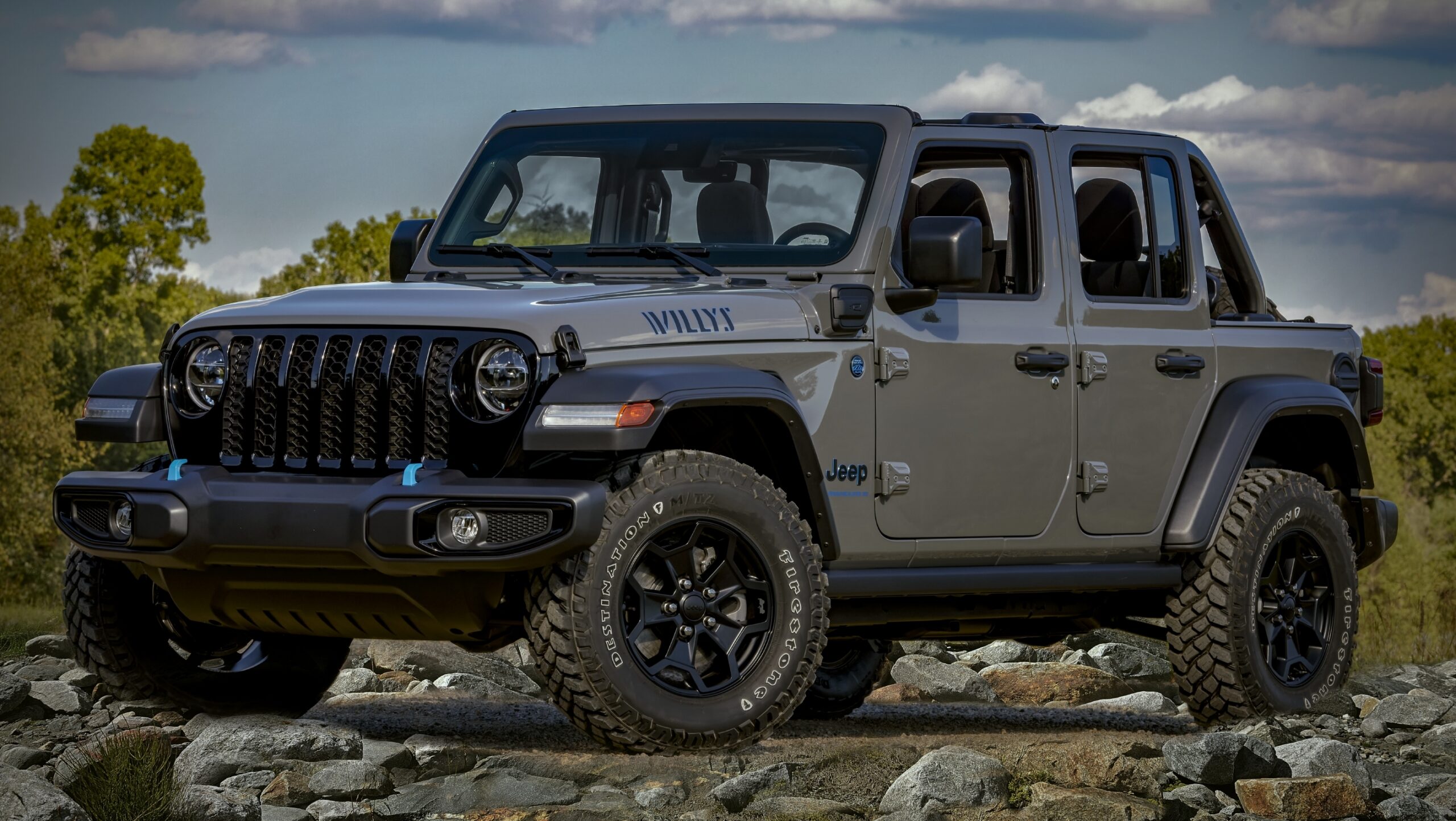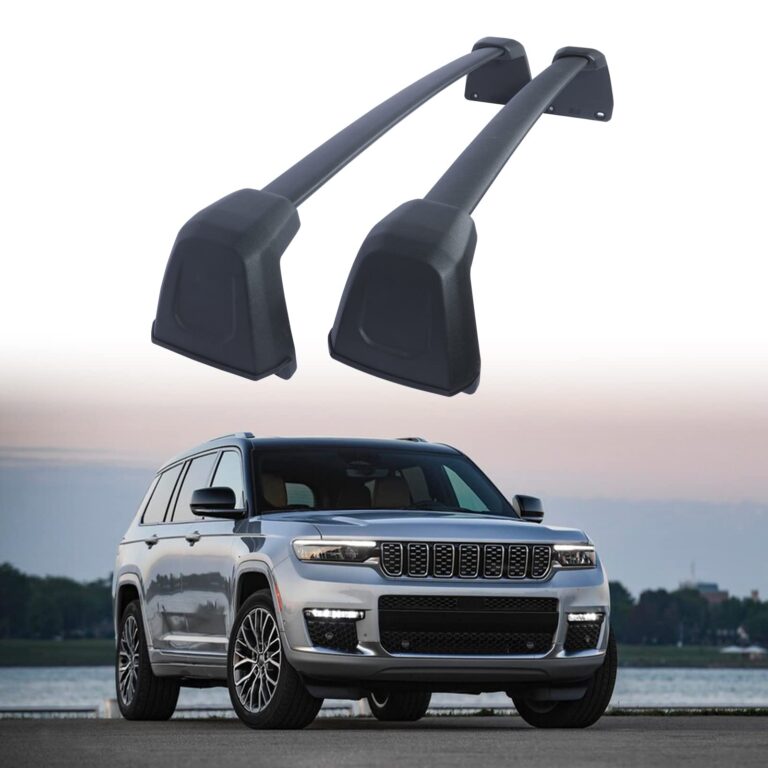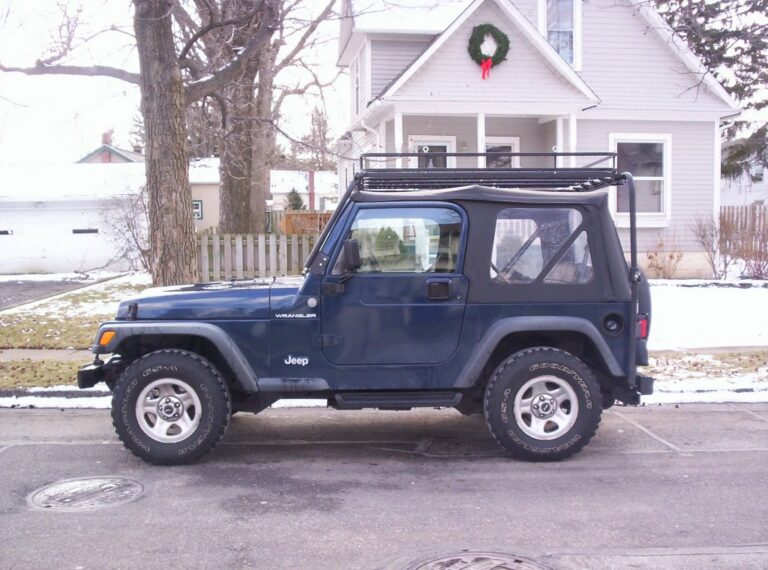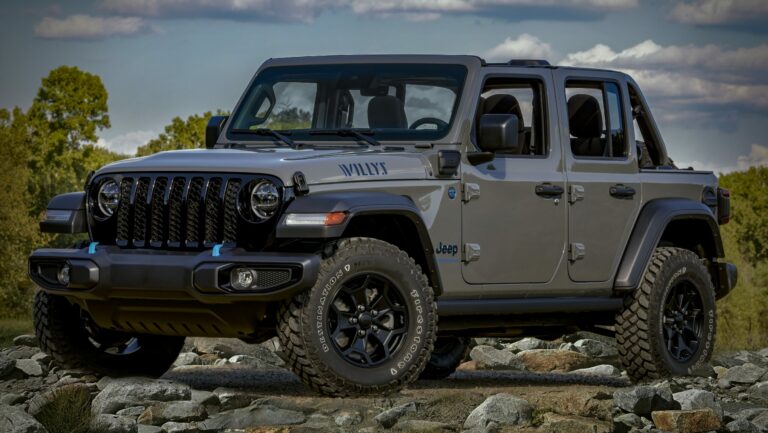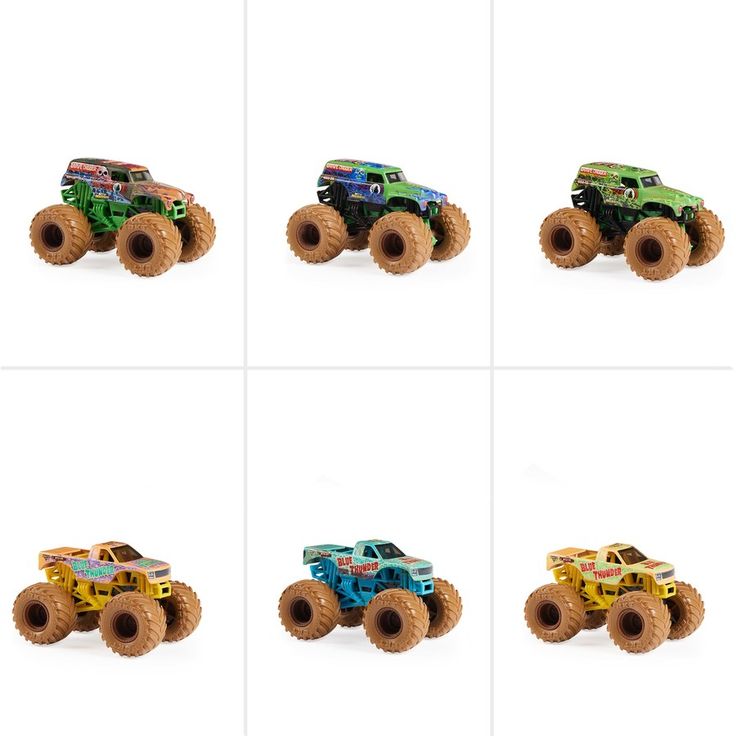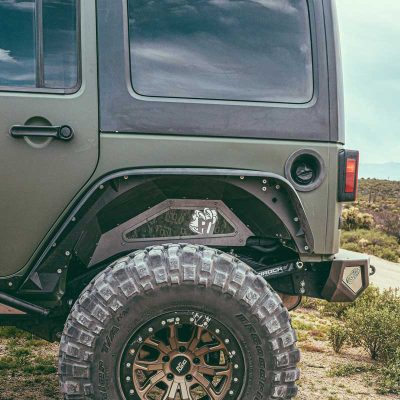Jeep Wrangler 2 Door Overland
Jeep Wrangler 2 Door Overland jeeps.truckstrend.com
The open road, the untouched trail, the call of the wild – for many, these are the ingredients of the ultimate adventure. And few vehicles embody this spirit of exploration and self-reliance quite like the Jeep Wrangler. While the four-door Unlimited has gained popularity for its family-friendly space, the iconic two-door Wrangler holds a special place in the hearts of purists and seasoned overlanders alike. The Jeep Wrangler 2 Door Overland isn’t just a vehicle; it’s a philosophy of compact capability, nimble agility, and a deep connection to the essence of off-road adventure.
Overlanding, at its core, is self-reliant travel to remote destinations where the journey is as important as the destination. It involves traversing challenging terrains, often requiring vehicles to carry all necessary supplies for extended periods. The 2-door Wrangler, with its legendary off-road prowess and compact footprint, presents a unique and compelling platform for this pursuit. It’s a testament to the idea that less can indeed be more when it comes to tackling the untamed wilderness.
Jeep Wrangler 2 Door Overland
The Essence of the 2-Door Overland: Compact Capability Unleashed
The two-door Jeep Wrangler, in any trim, inherently possesses characteristics that make it a formidable overlanding machine. Its shorter wheelbase is perhaps its most significant advantage, providing an unparalleled break-over angle and tighter turning radius. This allows it to navigate incredibly technical terrain, tight switchbacks, and dense forest trails that would challenge or completely block its longer-wheelbase counterparts.
While often perceived as limited by its size, the 2-door’s simplicity is its strength. It encourages a more minimalist approach to packing, forcing overlanders to prioritize essential gear and optimize every inch of space. This leads to a lighter, more agile vehicle, less prone to getting stuck and easier to recover. It’s a vehicle that embodies the "go anywhere" ethos without the bulk.
Why the 2-Door for Overlanding? Unpacking the Advantages
Choosing the 2-door Wrangler for your overlanding adventures offers a distinct set of benefits:
- Unmatched Agility: The short wheelbase (around 96 inches for the JL) is a game-changer for technical trails. It allows for tighter turns, easier maneuvering through rocks and ruts, and superior break-over angles, reducing the chance of "high-centering."
- Trail Nimbleness: In densely forested areas or on narrow mountain passes, the 2-door’s compact size makes it significantly easier to navigate without scraping paint or getting hung up.
- Purity of Experience: For many, the 2-door Wrangler represents the quintessential Jeep experience – open-air freedom, direct connection to the trail, and a more intimate adventure.
- Weight Savings: Generally lighter than the 4-door, the 2-door has a slightly better power-to-weight ratio and can be less taxing on components over time, potentially leading to better fuel economy (though still a Wrangler!) and reduced wear.
- Cost-Effectiveness (Initially): While customization costs add up, the base price of a 2-door Wrangler is typically lower than a comparable 4-door model.

Transforming Your 2-Door for the Trail: Essential Modifications

To truly excel as an overlanding rig, even the capable 2-door Wrangler benefits from strategic modifications. These enhancements address potential weaknesses and amplify its strengths:
- Suspension System: A quality lift kit (2-3 inches is often ideal for a 2-door) provides crucial ground clearance for larger tires and prevents bottoming out. Paired with high-quality shocks, it improves articulation and ride comfort on rough terrain.
- Tires and Wheels: Upgrading to larger (e.g., 33-35 inch) all-terrain (AT) or mud-terrain (MT) tires is paramount. These offer superior traction, durability, and a larger footprint for airing down. Beadlock-capable wheels can be beneficial for extreme airing down.
- Underbody Protection: Skid plates for the oil pan, transmission, transfer case, and fuel tank are essential to protect vital components from trail damage. Rock sliders protect the rocker panels and serve as steps.
- Recovery Gear: A winch (front or rear), synthetic recovery rope, soft shackles, a snatch block, a high-lift jack, and a shovel are non-negotiable for self-recovery or assisting others.
- Lighting: Auxiliary LED lights (light bars, pod lights) vastly improve visibility during night driving on trails, illuminating obstacles and potential hazards.
- Storage Solutions: This is critical for the 2-door.
- Interior Organization: Drawer systems, cargo nets, and MOLLE panels can maximize the rear cargo area. Removing the rear seats is a common modification to create a flat loading platform.
- Roof Rack: A sturdy roof rack expands carrying capacity for bulky items like tents, spare tires, fuel cans, or recovery boards.
- Rear Bumper with Tire Carrier/Fuel Cans: Moving the spare tire from the tailgate to a heavy-duty bumper carrier frees up space and strengthens the rear. Integrated fuel/water can mounts are a bonus.
- Trailer: For longer trips or more comfort, a lightweight off-road trailer can significantly expand carrying capacity without compromising the Wrangler’s agility.

Mastering the Art of Packing: Space Optimization for the 2-Door
The 2-door Wrangler demands a disciplined approach to packing. Every item must earn its place.
- Minimalist Mindset: Prioritize multi-functional items. Do you really need three pairs of shoes?
- Vertical Storage: Utilize the vertical space in the cargo area with stackable bins or drawer systems.
- Soft Bags: Duffel bags and soft-sided coolers conform better to irregular spaces than rigid boxes.
- Roof-Mounted Gear: Bulky but lighter items like sleeping bags, tents, or camping chairs can go on the roof rack. Ensure they are securely tied down and protected from the elements.
- Weight Distribution: Keep heavier items low and centered to maintain a stable center of gravity.
- Essential First: Pack recovery gear, first aid, and emergency supplies in easily accessible locations.
Navigating the Wilderness: Route Planning & Trail Etiquette
Overlanding isn’t just about the vehicle; it’s about the journey.
- Detailed Planning: Utilize dedicated overlanding apps (e.g., Gaia GPS, OnX Offroad), paper maps, and local knowledge to plan your route, considering terrain difficulty, fuel stops, and potential campsites.
- Communication: A reliable communication device (satellite messenger, HAM radio, CB radio) is crucial for emergencies or group travel in areas without cell service.
- Leave No Trace: Adhere strictly to Leave No Trace principles. Pack out everything you pack in, stay on designated trails, and respect wildlife and private property.
Overcoming the Hurdles: Challenges & Solutions
While the 2-door Wrangler is a phenomenal overlanding platform, its size does present some unique challenges:
- Limited Cargo Space:
- Solution: Ruthless packing optimization, rear seat removal, roof racks, rear bumper carriers, and considering a lightweight off-road trailer for longer expeditions.
- Payload Capacity: The 2-door generally has a lower payload capacity than the 4-door.
- Solution: Be mindful of the weight of modifications and gear. Choose lightweight components where possible. Don’t overload the vehicle beyond its Gross Vehicle Weight Rating (GVWR).
- Fuel Range: Smaller fuel tank combined with less-than-stellar fuel economy can limit range.
- Solution: Carry extra fuel in jerry cans (securely mounted, ideally outside the cabin) for remote stretches. Plan routes with fuel stops in mind.
Price Information: Jeep Wrangler 2 Door (Representative Overland-Capable Trims)
It’s important to note that "Overland" is more of a build philosophy than a specific factory trim for the 2-door Wrangler. However, certain 2-door trims provide excellent starting points for an overlanding rig. Prices are approximate MSRP for new models and can vary significantly based on options, location, incentives, and market conditions. These prices do not include any aftermarket modifications.
| Trim Level (2-Door) | Approximate Starting MSRP (USD) | Key Features for Overlanding Potential |
|---|---|---|
| Sport | $32,000 – $35,000 | – Most affordable entry point |
| – Basic but highly capable 4×4 | ||
| – Excellent platform for custom builds | ||
| Willys | $38,000 – $41,000 | – More aggressive off-road tires |
| – Limited-slip rear differential | ||
| – Rock rails, heavy-duty brakes | ||
| – Good balance of cost and capability | ||
| Rubicon | $47,000 – $50,000 | – Ultimate factory off-road capability |
| – Electronic locking front/rear diffs | ||
| – Electronic sway bar disconnect | ||
| – Lower 4:1 transfer case (4LO) | ||
| – Best choice for extreme trails out of the box |
Note: These prices are estimates for new vehicles at the time of writing and do not include destination charges, taxes, or any aftermarket modifications crucial for dedicated overlanding.
Frequently Asked Questions (FAQ)
Q1: Is the 2-door Wrangler big enough for overlanding?
A1: Yes, absolutely! While it requires more careful packing and space optimization, its compact size is a huge advantage for navigating challenging terrain. Many experienced overlanders prefer the 2-door for its agility.
Q2: What’s the best 2-door Wrangler trim for overlanding?
A2: The Rubicon offers the most off-road capability straight from the factory, making it an excellent base for serious overlanding. However, the Willys provides a great balance of features and value, and even the Sport can be built into a formidable overlander with aftermarket modifications.
Q3: Can you sleep in a 2-door Wrangler for overlanding?
A3: It’s challenging but possible. With the rear seats removed, you can create a flat platform, but it will be tight (around 5-6 feet in length depending on how far the front seats are moved forward). Many 2-door overlanders opt for a rooftop tent, ground tent, or a small off-road trailer with a sleeping setup.
Q4: How much cargo can a 2-door Wrangler carry for overlanding?
A4: The cargo space behind the rear seats is minimal. With the rear seats removed, it significantly increases. For extended trips, you’ll need a combination of interior organization (drawers, bins), a roof rack, and potentially a rear bumper with a tire/fuel carrier or a small off-road trailer.
Q5: What are the biggest challenges of overlanding with a 2-door Wrangler?
A5: The primary challenges are limited cargo space and lower payload capacity compared to the 4-door. Fuel range can also be a concern in very remote areas due to the smaller tank and typical Wrangler fuel economy. These are all manageable with careful planning and smart modifications.
Q6: Is a 2-door Wrangler comfortable for long overlanding trips?
A6: Comfort is subjective. While not as spacious as a large SUV, the 2-door Wrangler offers a surprisingly good ride quality, especially with an upgraded suspension. The open-air experience is unmatched, but road noise can be higher than in a more conventional vehicle. Proper seating and interior organization can greatly enhance comfort.
Conclusion
The Jeep Wrangler 2 Door Overland is more than just a vehicle; it’s a commitment to a particular style of adventure. It’s for those who value agility over cargo volume, nimbleness over brute force, and an intimate connection with the trail. While it demands careful planning and smart modifications to maximize its potential, the rewards are immense. The short wheelbase, legendary capability, and iconic open-air design combine to create an overlanding experience that is pure, unadulterated, and undeniably Jeep. For the solo explorer, the duo seeking rugged escapades, or anyone who believes that true adventure lies in conquering the unconquerable with a compact and capable companion, the 2-door Wrangler Overland stands as a beacon of freedom and exploration.

